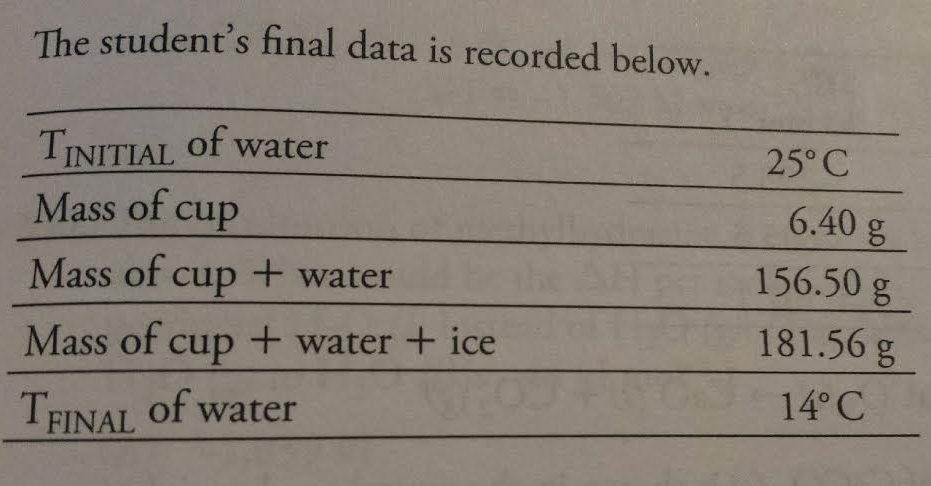
Journal Entry:
A student designed a procedure to determine the heat of fusion of ice. She constructed a calorimeter using a polystyrene cup ( with a removable cover with two openings) and the thermometer. She weighed the cup, then filled the cup with 150 ml of warm water, measured the temperature of the water, and then weighed the cup and water together. An ice cube taken from an ice bath stored in a -20°C freezer was added to the cup of water and the cup with the lid was weighed again. The student then inserted a thermometer into one of the openings in the cover and inserted a stirring rod into the other opening to gently stir the contents of the cup until all the ice was melted. The lowest temperature reached by the water in the cup was recorded.

The purpose of weighing the cup and its contents the third (last) time was to
(A) determine the mass of water that was added.
(B) determine the mass of ice that was added.
(C) determine the mass of the calorimeter and thermometer.
(D) determine the mass of water that evaporated while the lid was off the cup.
Learning Intentions
We will be able to interpret the results of an experiment in which calorimetry is used to determine the change in enthalpy of a chemical process at a constant pressure.
We will learn the three processes that cause a system to change its energy.
We will learn about the energy transformations and particle changes involved in dissolving and diluting solutions.
Content Standards being covered:
Temperature is a measure of the average kinetic energy of atoms and molecules. (EK 5.A.1)
When two systems are in contact with each other and are otherwise isolated, the energy that comes out of one system is equal to the energy that does into the other system. The combined energy of the two systems remains fixed. Energy transfer can occur through either heat exchange or work. (EK 5.B.2)
Calorimetry is an experimental technique that is used to determine the heat exchange/transferred in a chemical system. (EK 5.B.4)
Chemical system undergo three main processes that change their energy: heating/cooling, phase transitions, and chemical reactions. (E.K. 5.B.3.)
At the particulate scale, chemical processes can be distinguished from physical processes because chemical bonds can be distinguished from intermolecular interactions. (E.K. 5.D.2)